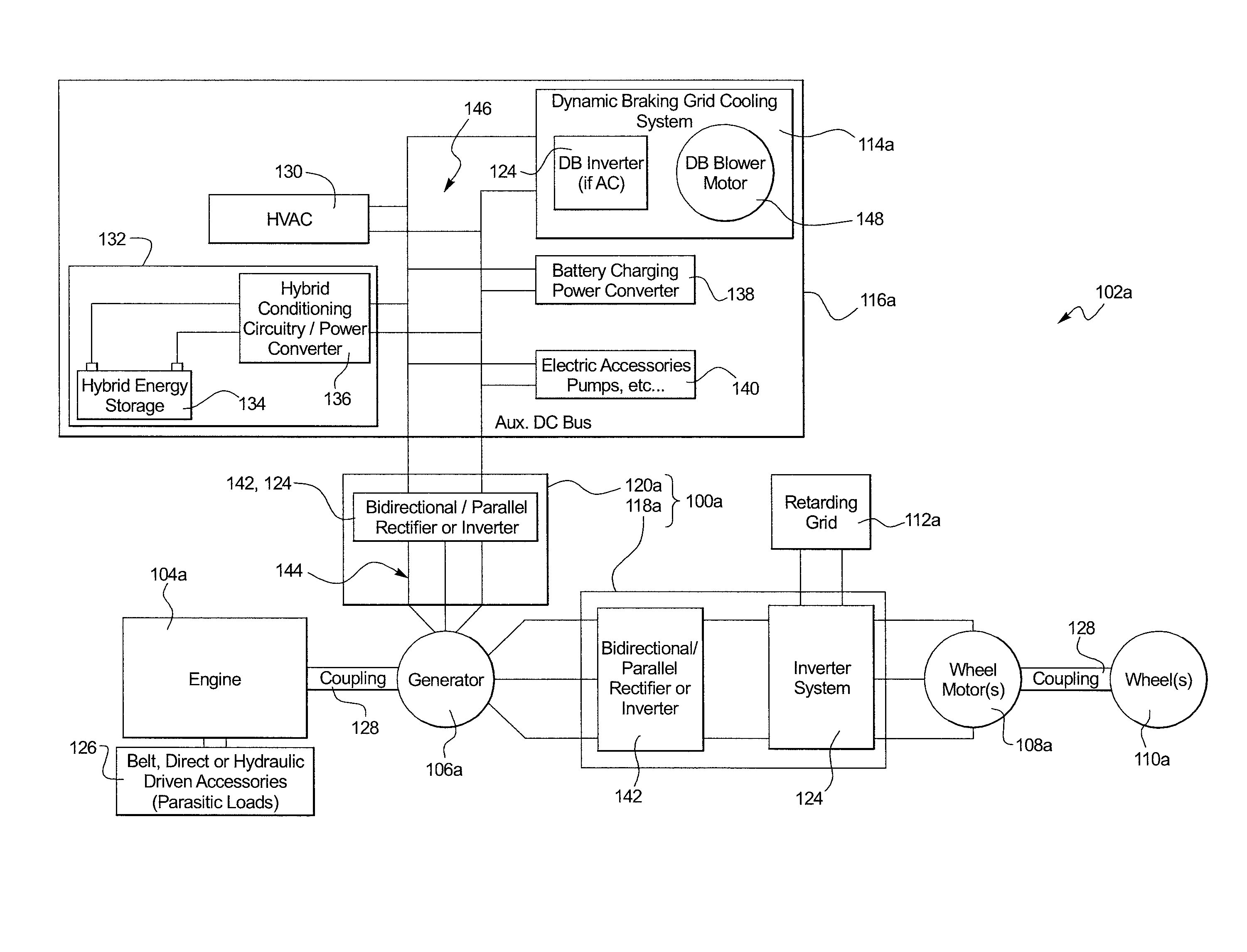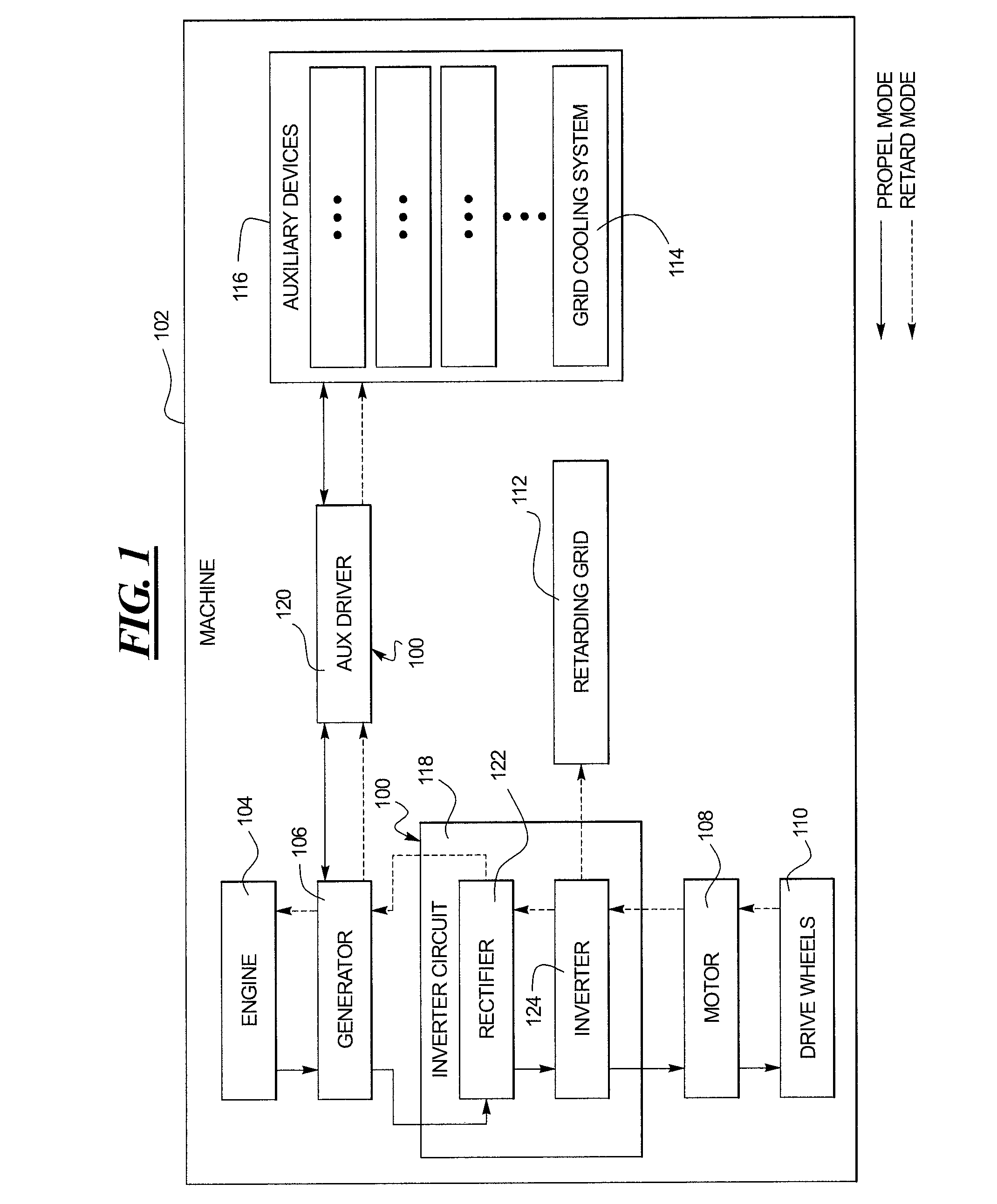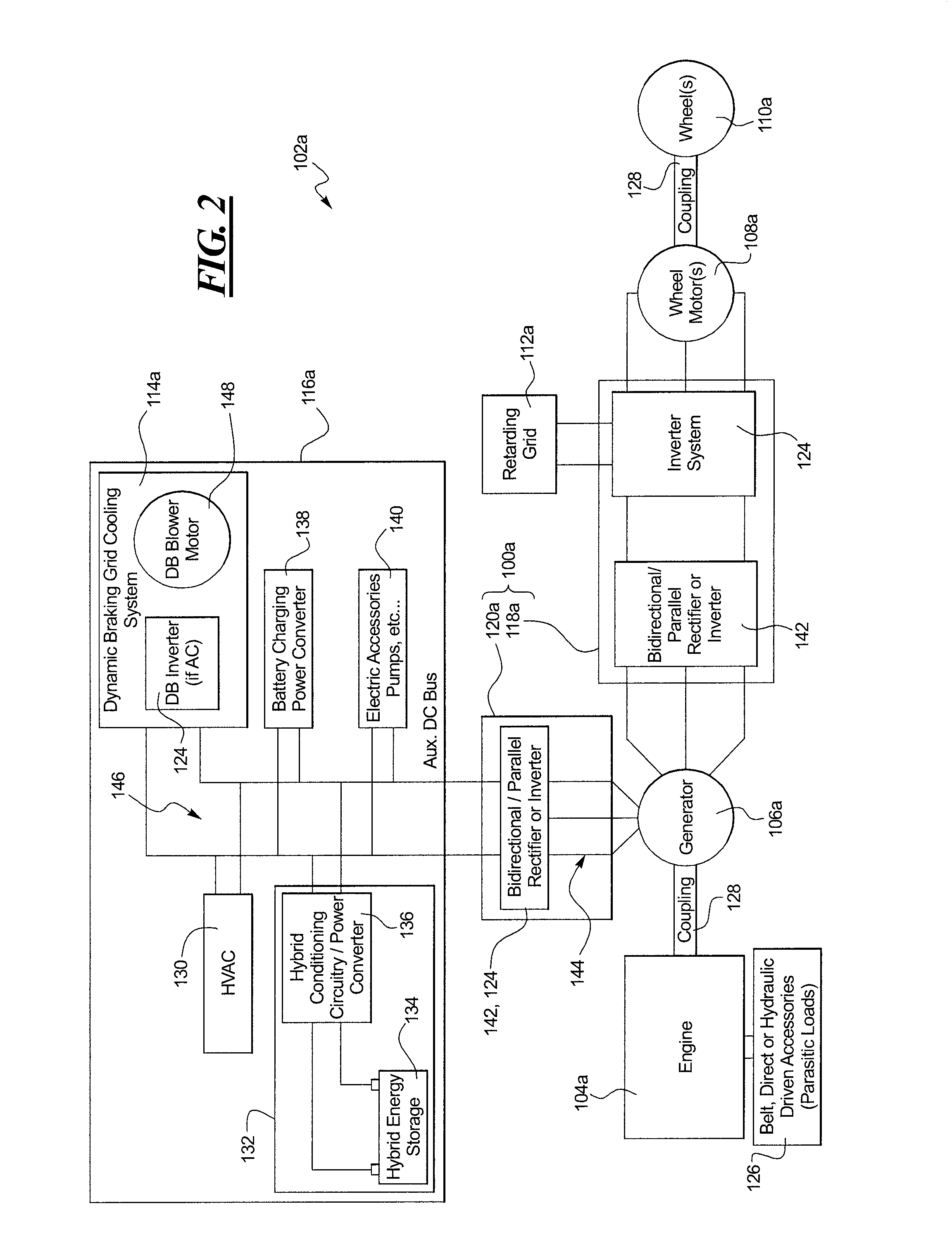Method and system for eliminating fuel consumption during dynamic braking of electric drive machines
a technology of electric drive machine and dynamic braking, which is applied in the direction of motor/generator/converter stopper, electric device, dynamo-electric converter control, etc., can solve the problems of increasing fuel consumption during propel mode, increasing weight of vehicle, and introducing significant cost and technological limitations, so as to eliminate fuel consumption during dynamic braking
- Summary
- Abstract
- Description
- Claims
- Application Information
AI Technical Summary
Benefits of technology
Problems solved by technology
Method used
Image
Examples
Embodiment Construction
[0020]Reference will now be made in detail to specific embodiments or features, examples of which are illustrated in the accompanying drawings. Generally, corresponding reference numbers will be used throughout the drawings to refer to the same or corresponding parts.
[0021]FIG. 1 schematically illustrates an exemplary drive system 100 as applied to an electric drive machine 102, such as an off-road truck, or the like. The electric drive machine 102 may include an engine 104, a generator 106, one or more traction motors 108, one or more final drive wheels 110, a retarding grid 112, a grid cooling system 114 and one or more auxiliary devices 116. As shown, the drive system 100 may provide the machine 102 with at least an inverter circuit 118 and an auxiliary driver 120. The inverter circuit 118 may include one or more rectifiers 122, inverters 124, or any combination thereof, and be disposed between the generator 106 and the motor 108. The auxiliary driver 120 may be disposed between ...
PUM
 Login to View More
Login to View More Abstract
Description
Claims
Application Information
 Login to View More
Login to View More - R&D
- Intellectual Property
- Life Sciences
- Materials
- Tech Scout
- Unparalleled Data Quality
- Higher Quality Content
- 60% Fewer Hallucinations
Browse by: Latest US Patents, China's latest patents, Technical Efficacy Thesaurus, Application Domain, Technology Topic, Popular Technical Reports.
© 2025 PatSnap. All rights reserved.Legal|Privacy policy|Modern Slavery Act Transparency Statement|Sitemap|About US| Contact US: help@patsnap.com



